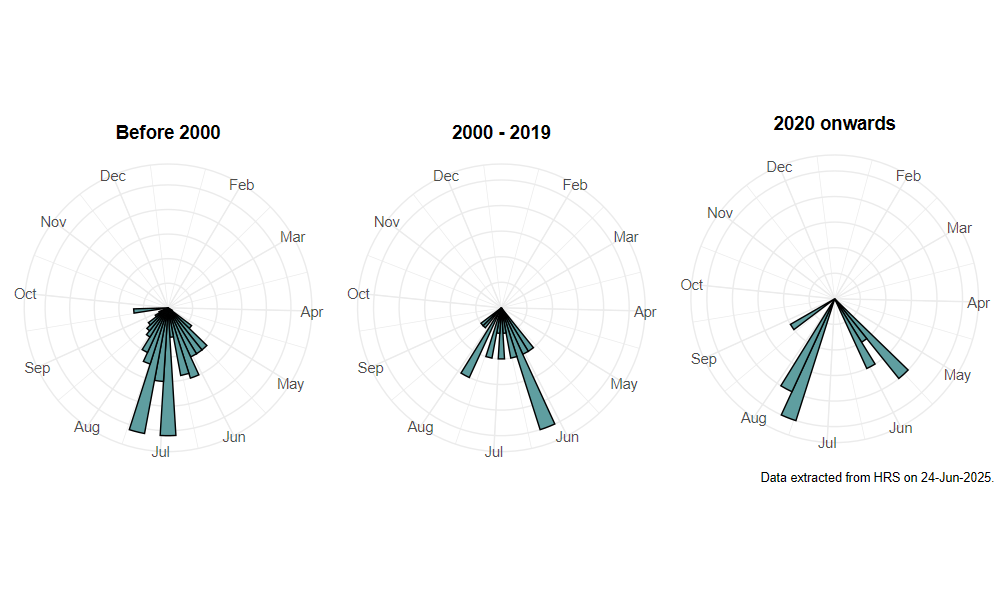Anasimyia lunulata (Meigen, 1822)
Identification
Identification difficulty = 4. ![]()
![]() according to Ball & Morris, 20241
according to Ball & Morris, 20241
Synonymy
This species was confused with A. interpuncta before the review by Claussen & Torp (1980)2; older records are therefore suspect unless a specimen has been re-examined.
Biology
The larva is of the 'long-tailed' type and lives principally in more acid localities than is typical for other members of the genus including valley bogs and cut-over bogs where vegetation is regenerating. It is possible that sites with some base influence are preferred and this might account for the restricted distribution of this species. Adults are rarely found far from the water's edge and are flower visitors.
Flight period
The following plots show the number of unique records per week that were not reported to be of eggs, larvae or pupae.

Status
Lower Risk (Nationally scarce) - Ball & Morris, 20143. Notable - Falk, 19914.
Distribution
Primarily a western and northern species which is particularly well-known from peatlands in western Wales where it can be abundant. There are also scattered records from South Uist, Cheshire, Devon, Dorset and the New Forest. Old records from eastern Britain including East Anglia but some of these may involve confusion with A. interpuncta. The population at Thursley Common (Surrey) is believed to be extinct.

Trends
The following plots show the Frescalo TFactor vs year and a map of the rescaled frequency (all records) for the species. For an explanation see here.

-
Ball, S., & Morris, R. (2024). Hoverflies of Britain and Ireland. WILDGuides (3rd ed.). Oxford: Princeton University Press. ↩
-
Claussen, C., & Torp, E. (1980). Untersuchungen uber vier europaische Arten der Gattung Anasimyia Schiner, 1864 (Insecta, Diptera, Syrphidae). Mitt. zool. Mus. Univ. Kiel., 1(4), 1–11. ↩
-
Ball, S., & Morris, R. (2014). A review of the scarce and threatened flies of Great Britain. Part 6: Syrphidae. ( No. 9). Species status (pp. 1–130). Peterborough: JNCC. ↩
-
Falk, S. (1991). A review of the scarce and threatened flies of Great Britain. ( No. 39). Research and Survey in Nature Conservation (pp. 1–194). Peterborough: NCC. ↩